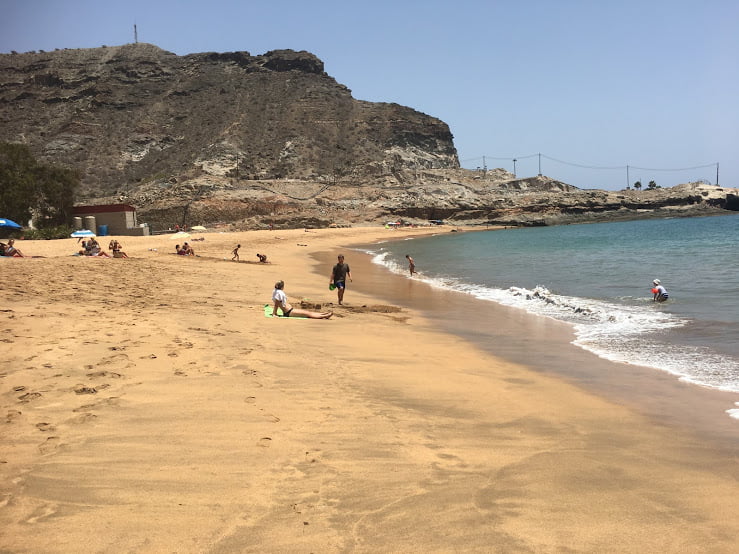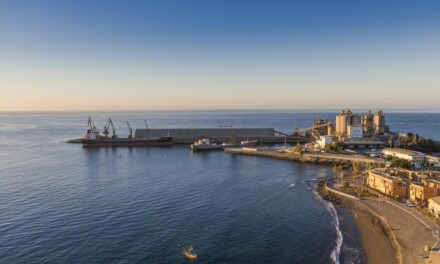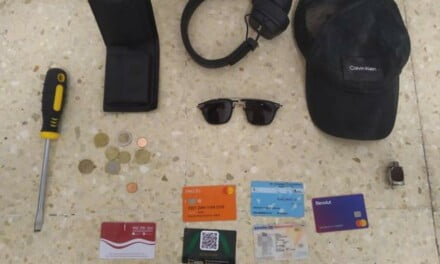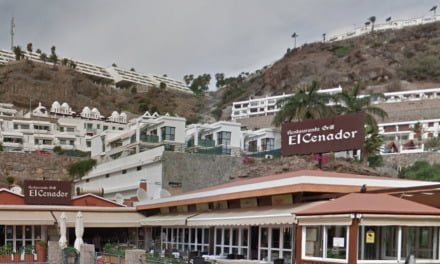 The disgraced former head of the Demarcation of Coasts for the Canary Islands, José María Hernández de León, stands accused of having illegally authorised the artificial beach at Tauro for the benefit of the Anfi group, last week declared before the Provincial Court of Las Palmas that his only motivation was “for the public interest when granting the license”, adding that he had been the “victim of a trap” engineered by his sub-ordinate technician Ignacio López-San Vicente, along with the deputy general director of the Maritime-Terrestrial Public Domain, Josefa Solernou and other officials from his department. The prosecutor Javier Ródenas appeared incredulous, insisting that it was Hernández de León who proceeded illegally when the beach works license was granted to Anfi Group and developers Santana Cazorla back in 2016.
The disgraced former head of the Demarcation of Coasts for the Canary Islands, José María Hernández de León, stands accused of having illegally authorised the artificial beach at Tauro for the benefit of the Anfi group, last week declared before the Provincial Court of Las Palmas that his only motivation was “for the public interest when granting the license”, adding that he had been the “victim of a trap” engineered by his sub-ordinate technician Ignacio López-San Vicente, along with the deputy general director of the Maritime-Terrestrial Public Domain, Josefa Solernou and other officials from his department. The prosecutor Javier Ródenas appeared incredulous, insisting that it was Hernández de León who proceeded illegally when the beach works license was granted to Anfi Group and developers Santana Cazorla back in 2016.
This was the first day of the hearing in which the Environmental Prosecutor’s Office are pressing for three and a half years in prison for the crimes of prevarication and falsehood. José María Hernández de León said he had always acted “within the law”, despite the fact that Ródenas insistently demonstrated that the authorisation back in February 2016, for the works to create the artificial beach, was signed without several fundamental requirements having been met, including the ceding of 3,811 square meters of land from the concessionaire and redefinition of the project that engineer Ignacio López-San Vicente never signed, instead informing his superiors of his protests regarding alleged irregularities.
The prosecutor intensely questioned Hernández de León insisting on several important points regarding the fact that the map of the area that was used in a draft of the minutes, that was used to authorise the start of the works, was in fact different from the one that had been presented at first: “We signed the minutes and the corrections that the technician presented to us and we corrected them in the afternoon, although many of the corrections were not needed. It is true that there was a small incursion of a property [into the land marked out] but the work was completed without having to demolish anything” said the former head of the Costas. This claim was however denied by the developer Santiago Santana Cazorla himself, in his statement saying that the work has not yet been completed in its entirety.
The prosecutor insisted that the Anfi group, which had the obligation to cede the land, had signed over different plots to the ones offered after the works had begun, before the complicity of Hernández de León.
The engineer, working for the Demarcation of Costas Department, Ignacio López-San Vicente, maintained at the hearing that he had refused “to sign the act of redefinition for the works because there were objections to the project”
engineer, working for the Demarcation of Costas Department, Ignacio López-San Vicente, maintained at the hearing that he had refused “to sign the act of redefinition for the works because there were objections to the project”
“There was a landmark inside the courtyard of a building, problems of sanitation … numerous irregularities of which I warned the head of Costas and [which he] ignored and so I refused to sign the minutes” he said. He argued that, although he had warned of irregularities, the head of Costas “verbally authorised the start of the works.”
“My boss -in reference to the defendant- and Santana Cazorla told me in a harsh tone that I had no need to sign, that I was already known to always be the one that hindered the projects, and that it was all because of the bad relationship I had with my superior. I said that there was no way to do it and that’s why I refused to be an accomplice to the irregularity and, despite everything, my boss gave them authorisation for the work.”
Works on the Tauro Beach project began in the spring of 2016 and included the importation and dumping of 70,000 tonnes of sand controversially purchased from the disputed territory of Western Sahara, despite a UN ban on commerce while Morocco’s administration and occupation of those lands are still subject to conflict.
Several families live in their own ramshackle properties along the shore front, which had previously been all stony beach and fairly inaccessible. It is these residents and owners of dwellings who first objected to the project on the basis that they still owned their properties and had not agreed to the works being carried out.
Furthermore, Anfi Group won the concession to operate the beach project on the basis that they not only owned the land, but that they would cede ownership of more than 3,000 m2 to the state as part of the deal.
The works were stopped after Guardia Civil responded to claims of illegalities in July, the first high tides of August that year led to flooding of properties along the shoreline.
The beach was officially closed, and the project stopped, after the Head of Costas was dismissed for improprieties and a formal investigation was begun.
The beach is easily accessed on a daily basis by hundreds of members of the public, though without oversight or basic safety precautions in place there is a distinct fear that should a beach user suffer injury that further harm could be caused due to no life guards nor basic life support on site.
The hearings continue.
The Canary Guide











